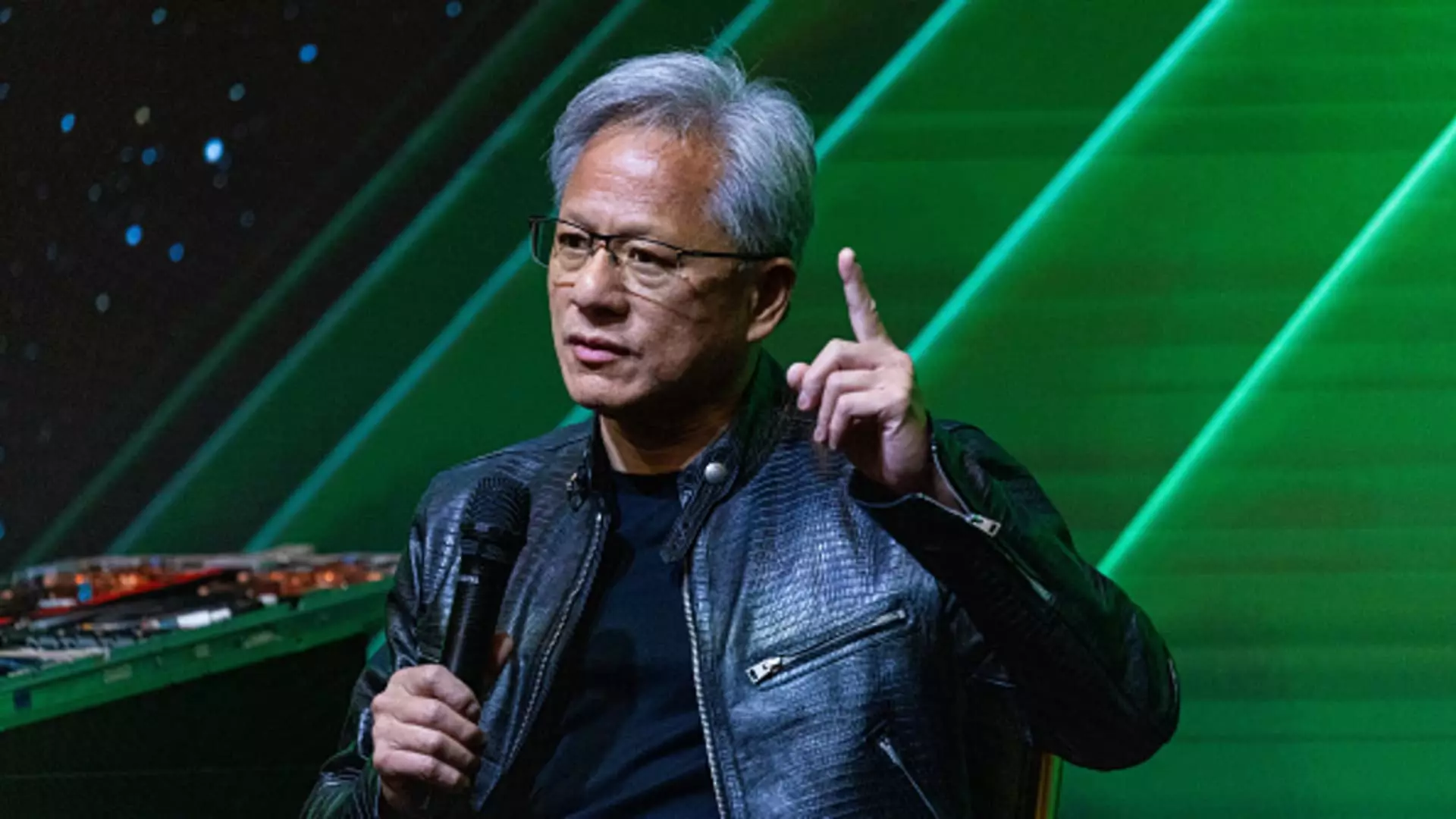Artificial intelligence continues to revolutionize the tech industry, with companies racing to innovate and enhance their capabilities. Among the recent headlines is DeepSeek, a Chinese startup that introduced its open-source R1 reasoning model, garnering significant praise from Nvidia, a leader in GPU technology. However, the launch of R1 has stirred up a paradoxical response: as Nvidia acknowledges the technological advancement, its stock took a sharp nosedive, reflecting the intricate interplay between competition and investment in the AI sector.
DeepSeek’s R1 model has been touted as a groundbreaking achievement, particularly in the realm of “Test Time Scaling,” a concept that Nvidia highlighted as pivotal to its design. This method allows models to be fine-tuned using pre-existing data and computing resources, a fact that DeepSeek leveraged to create R1 for an impressively low training cost of under $6 million. This figure starkly contrasts with the hefty investment estimates from American tech giants like Microsoft and Meta, who are planning to spend upwards of $60 billion on AI infrastructure in the coming years.
The success of R1 raises critical questions regarding the efficiency and return on investment associated with traditional AI model training. Companies entrenched in the AI race may now be compelled to reevaluate their strategies, especially if competing models can achieve comparable results at a fraction of the cost. This collaborative competition could signal an emerging trend where innovative startups provide more agile and cost-effective solutions, potentially destabilizing the market balance that has long favored established firms.
Nvidia’s response to DeepSeek’s advancement was multifaceted. While acknowledging the exceptional capabilities of the R1 model, the company emphasized the continued necessity for its GPU technology, suggesting that the demand for high-performance networking and processing power will persist even in light of cheaper alternatives. This assertion underscores an interesting approach—recognizing competition yet reinforcing the value of their own offerings.
The notion of dual scaling laws introduced by Nvidia—comprising pre-training, post-training, and the novel test-time scaling—serves as a testament to the evolving narrative within AI modeling. Nvidia’s commitment to providing infrastructure suggests that while newer models may challenge traditional pricing structures, the underlying technology that facilitates those models remains indispensable. The company is positioned to continue reaping benefits as the demand for GPUs rises alongside the increasing appetite for powerful AI capabilities.
The rise of DeepSeek and its R1 model not only threatens established norms within the AI sector but portends broader economic consequences. Analysts are beginning to scrutinize the potential for reduced costs in AI-related services across various industries, which could lead to lower operational costs for companies that rely heavily on cloud-based AI services. As institutions that invest heavily in AI grapple with the realization that cheaper alternatives are available, the economic landscape could shift significantly.
Furthermore, BofA Securities analyst Justin Post indicated that lower training costs would lead to immediate financial advantages for sectors that leverage AI services. This perception, if shared broadly, could catalyze a more comprehensive reevaluation of investment strategies across the tech ecosystem, leading to a potential reallocation of funds toward emergent companies like DeepSeek.
As Nvidia finds itself navigating this new competitive terrain, the importance of adapting strategies to maintain relevance becomes more pronounced. The interplay between traditional giants and agile newcomers may forge a path toward a more democratized AI landscape, where the ability to innovate is not confined to the largest players but open to those who can harness technology creatively and economically.
DeepSeek’s R1 model, while a flashpoint of concern for Nvidia, ultimately represents the dynamic and rapidly evolving nature of the AI industry. The implications of this shift will resonate through investment strategies, operational frameworks, and product offerings in the years to come. The future of AI development not only depends on advancements in technology but on the readiness of companies to pivot and embrace competition, proving that in the realm of innovation, adaptability is key.

